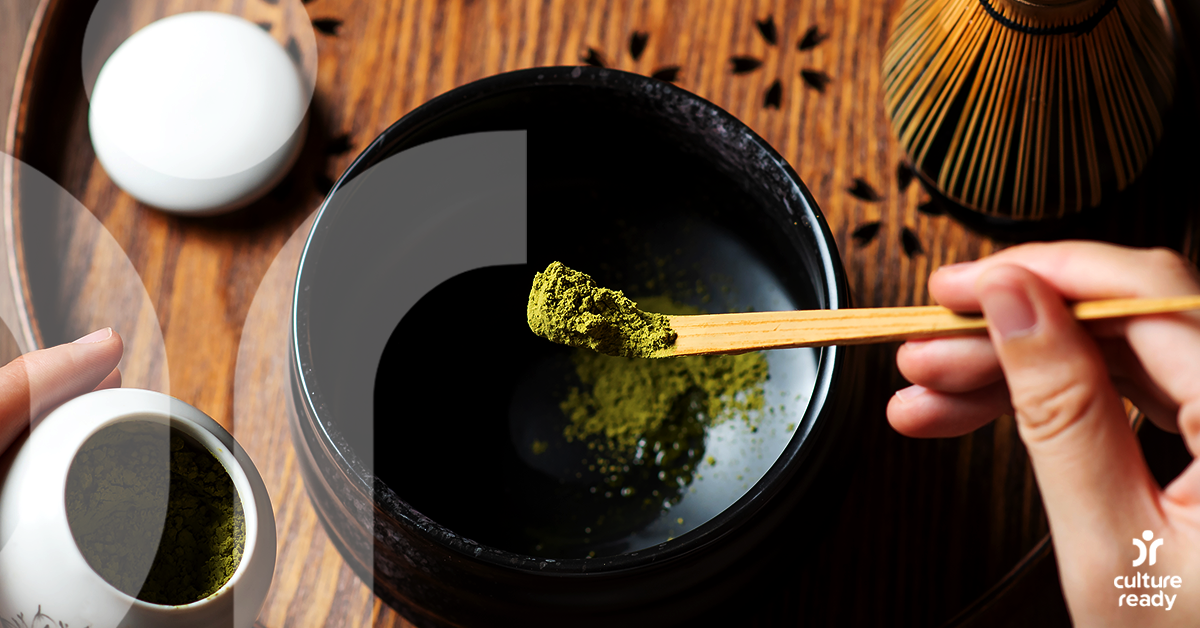Steeped in Japanese Culture: Green Tea
Green tea is Japan’s most-consumed beverage, served first thing in the morning and with almost every meal.
First introduced to Japan in the 8th century, tea was mainly consumed as a medicinal beverage by monks and the upper class.
In 1211, a Zen monk named Myouan Eisai, wrote the first edition of the Kissa Yōjōki (喫茶養生記, Drink Tea and Prolong Life. The book covered how to cultivate tea and the health benefits of drinking green tea, including curing fatigue, indigestion, and heart disease. The book’s success led to tea becoming a central part of everyday life among all levels of Japanese society.
While green tea comes from the same plant as black tea, the difference is that green tea leaves are processed in such a way as to prevent oxidation. Japanese green tea is unique in that the leaves are steamed shortly after being harvested.
The many varieties of green tea, which differ in color and flavor, are characterized by the amount of sunlight leaves are exposed to, when the plants were cultivated, and how the leaves were processed. Sencha is the most popular tea in Japan, representing 80 percent of all tea produced each year. Other types include matcha, gyokuro, and kukicha.
Made with leaves picked in spring during the first harvest of the year, gyokuro is the highest-quality tea. For this variety, the leaves are shaded from the sun for 20 days before being harvested, which results in a sweeter taste than other types of green tea.
Mostly known for being the main ingredient used in the traditional Japanese tea ceremony, matcha is a powdered green tea, which gets its unique flavor and bright green color from the way it’s processed. Before harvesting, the leaves are kept sheltered from the sun, which boosts the plant’s level of chlorophyll. Once they’ve been steamed and dried, the leaves are ground to a fine powder.
Unlike gyokuro and matcha, the tea leaves used for sencha are grown entirely in direct sunlight, giving this variety a more bitter flavor.
Japanese tea culture is so strong that the beverage is honored during a daylong celebration. Green Tea Day occurs on the 88th day following the first day of spring—generally May 1st or 2nd—since this is considered the perfect day to begin the harvesting season. The tea leaves harvested on that day are believed to bring good luck.
